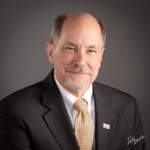NSBA, joined by several state school board associations, filed a comment this week urging the Federal Communications Commission (FCC) to reject a proposal that would cap the Universal Service Fund and place the E-Rate and other programs' budgets in uncertainty.
Created in compliance of the Telecommunications Act in 1996, the USF provides affordable internet access to low-income and rural areas. The FCC established four programs – Connect America Fund, Lifeline, E-Rate and Rural Health Care – to implement that objective. Currently, each program has its own funding limit.
The Commission’s May 31 Notice of Proposed Rulemaking would eliminate each program’s individual funding limit and instead place an overall cap for the USF.
In its comments to the Commission, NSBA made clear that placing an overall spending cap on the USF runs contrary to the Telecommunications Act of 1996 by leading to unnecessary competition among the four programs. If enacted, the rule would create confusion and hinder the USF’s purpose of better connecting the nation to the internet.
Additionally, enacting this rule would force school boards and districts across the nation to face uncertainty in their yearly budgeting process and place adequate connectivity for their students in jeopardy. For this reason, many state school board associations offered their own comments to the Commission.
This proposal follows the FCC’s 2014 decision to modernize and expand the E-Rate program, which has connected thousands of schools to high-speed broadband. According to EducationSuperhighway’s 2018 State of the States, 40.7 million more students in 81,000 schools have high-speed internet access than did so in 2013.
NSBA encourages the Commission to reject this rule and instead focus on doing more to help students connect to broadband. Access to the internet is a required for success in the twenty-first century, and all students deserve access to high-speed broadband.
“NSBA would welcome the opportunity to work with the Commission and other interested parties in helping better connect schools and students to high-speed broadband,” NSBA’s comment reads. “It is imperative that the digital divide be better addressed. Many areas of the nation, especially rural areas, continue to lag behind in connectivity and there are still enormous broadband gaps when students are out of school.”
Read NSBA’s full comment to the FCC.
Universal Service Fund Cap Statement
NSBA Opposes Proposed Rule to Affect Low-Income and Rural Access Internet Funding
Alexandria, Va.,
July 31, 2019


Share this content